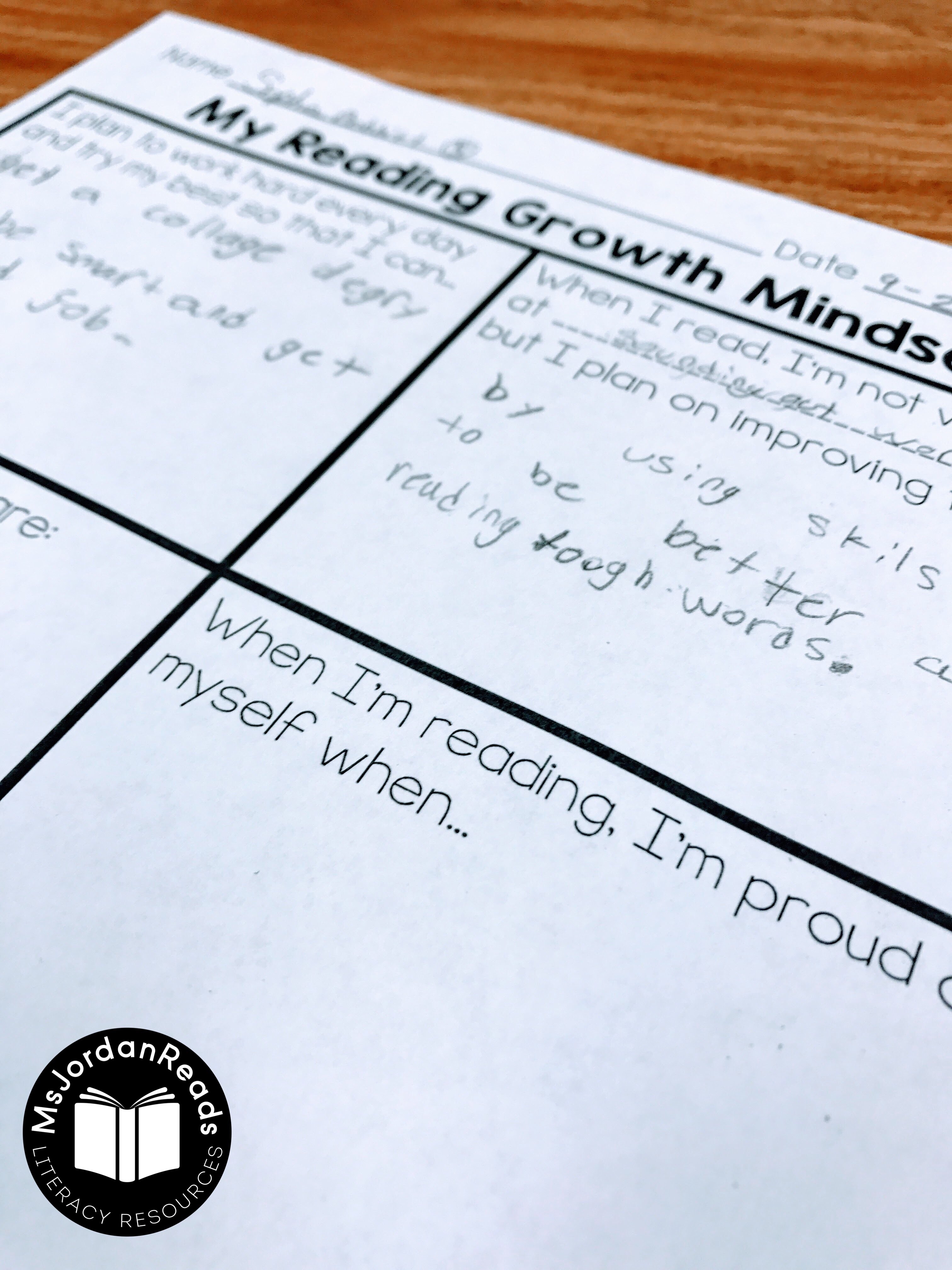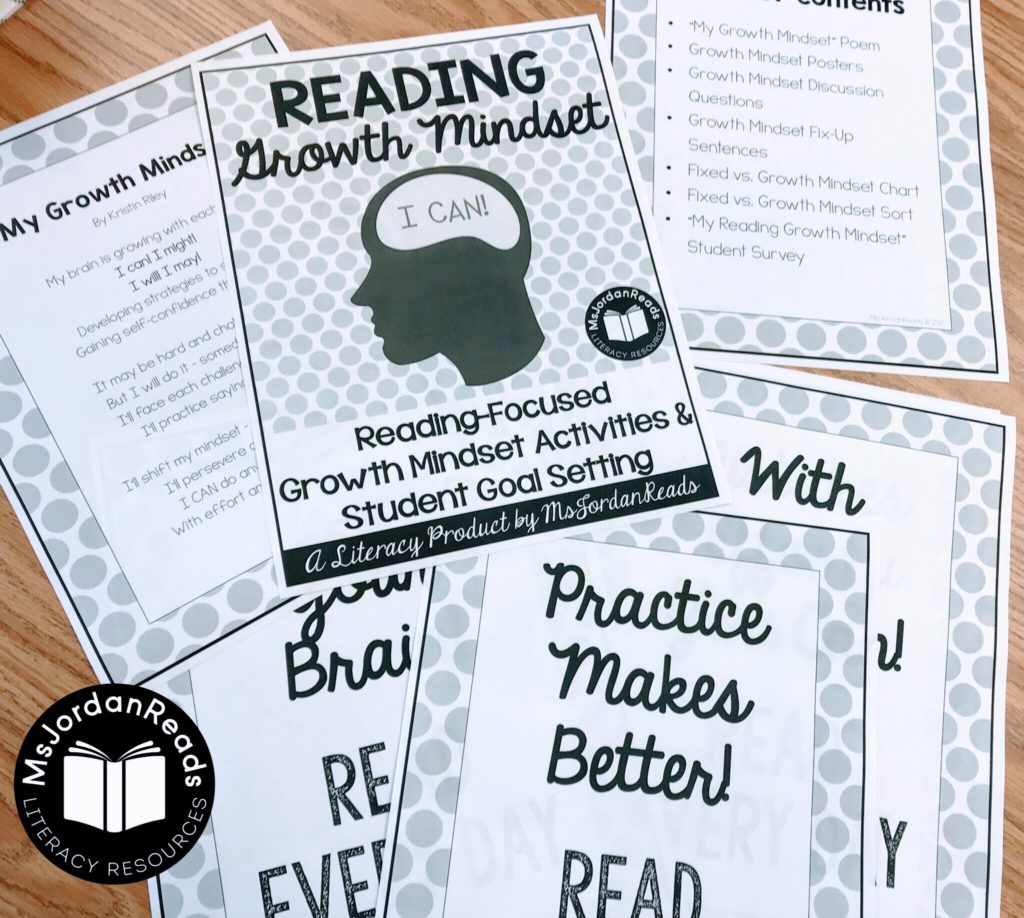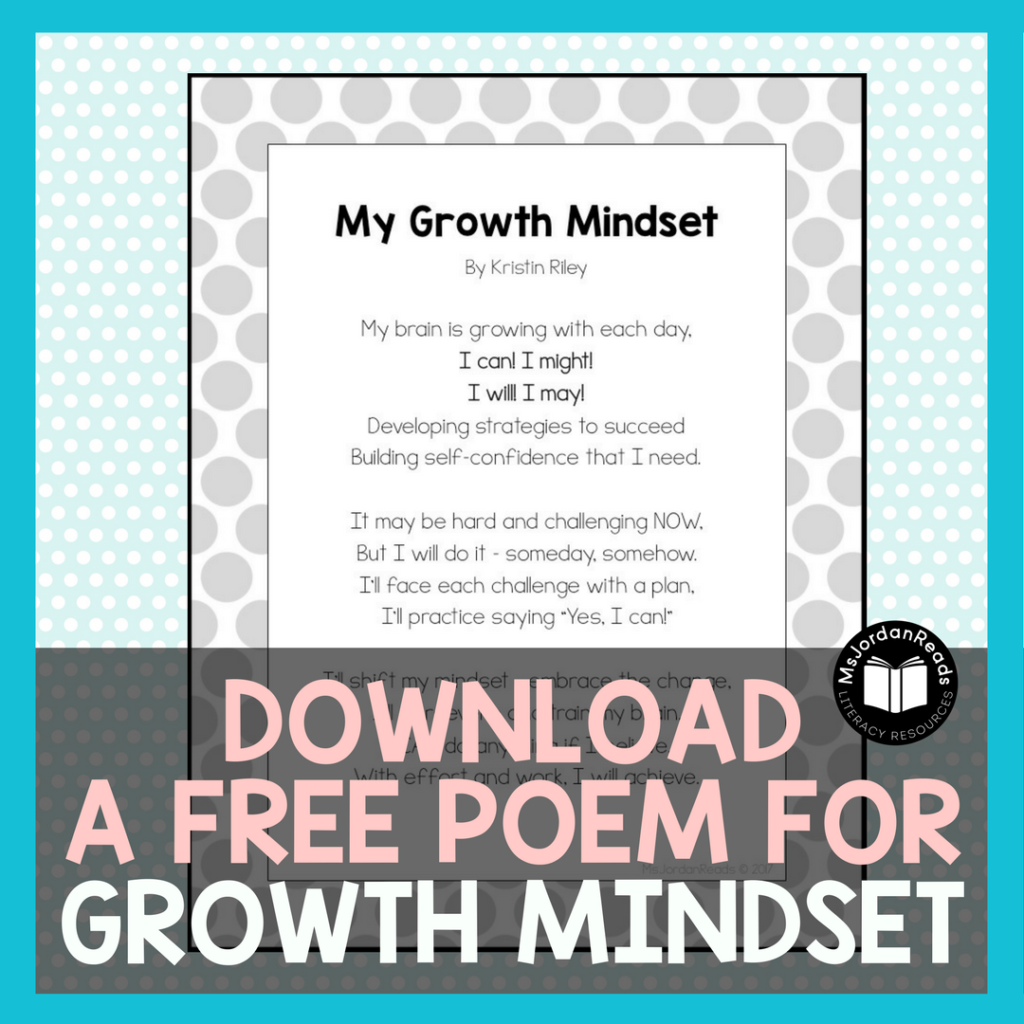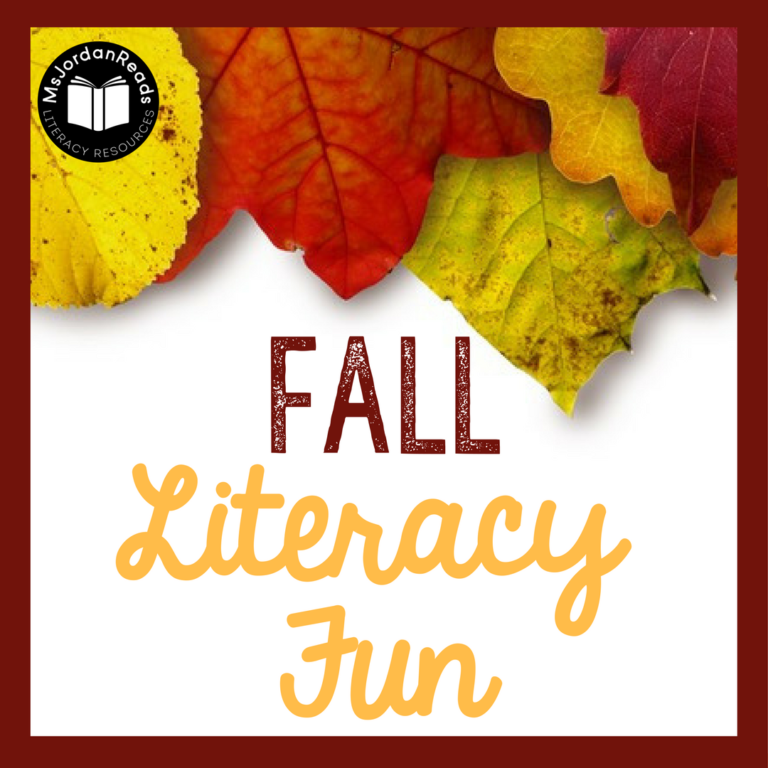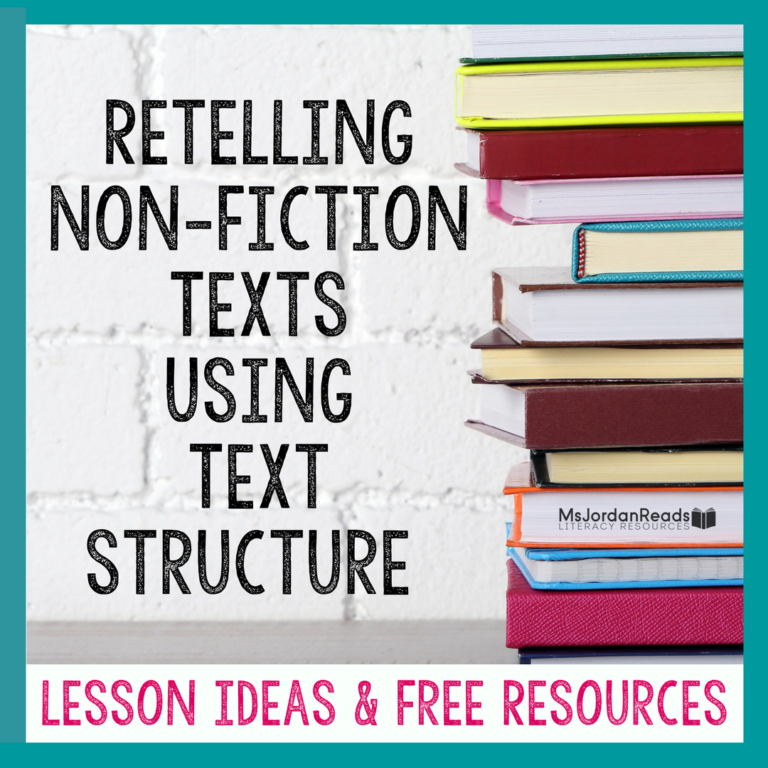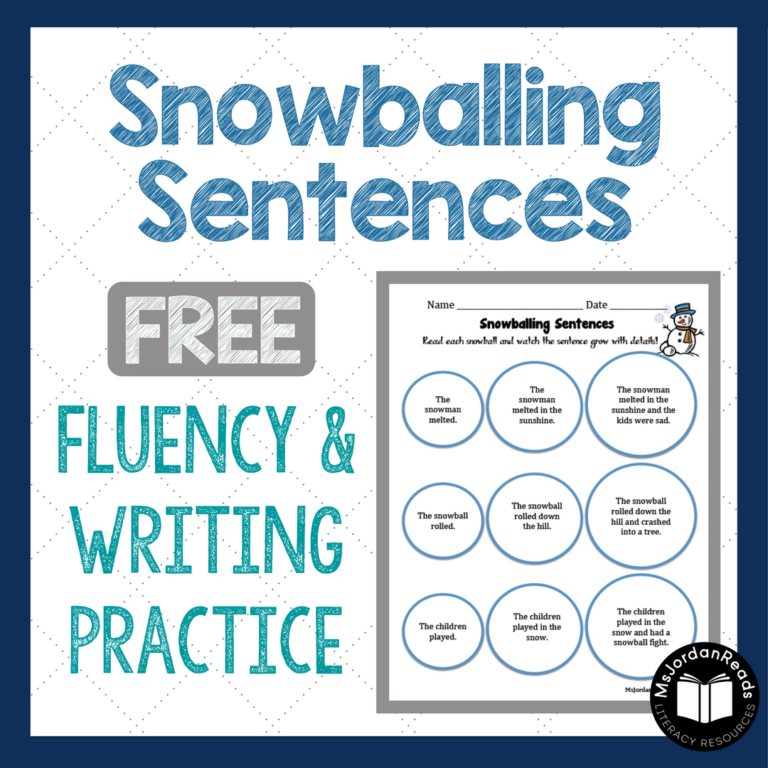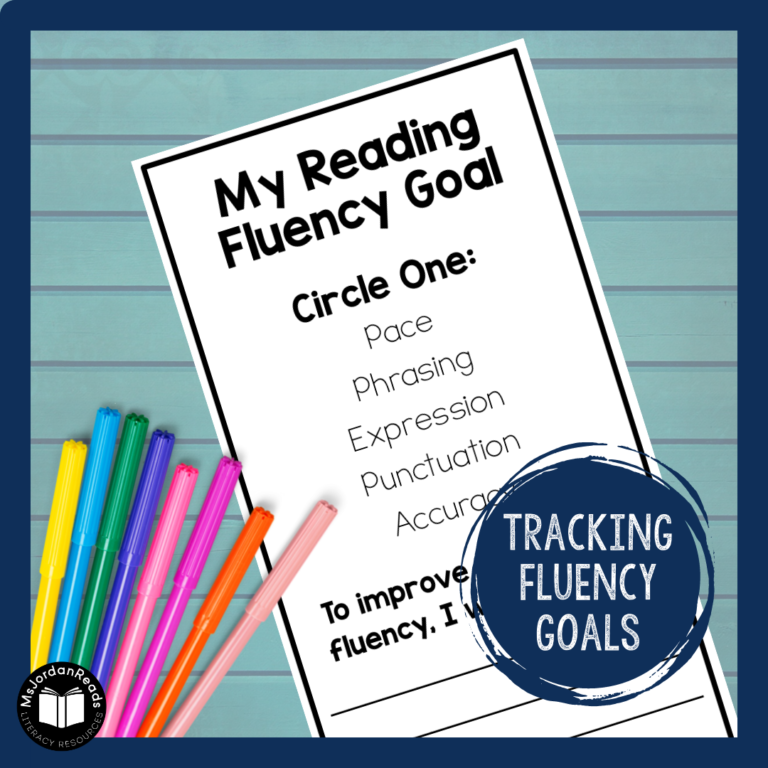Developing a Growth Mindset for Reading
“I’m not a good reader.”
“I hate reading.”
“I’ll never get better at reading.”
I am a Reading Specialist in a Title I school, and too often, these are the words I hear from my students. The reality is… my students struggle, every single one of them. Working in a remedial reading program, it’s hard to convince my struggling readers that it will get easier or that they will become better readers, especially once they get into 4th and 5th grade. Most of my students get in their own way. Many of them avoid situations that lead to failure or frustration. They often have a defeatist attitude, which prevents them from trying, and it leads to them just giving up.
So how do you teach confidence, resilience, and perseverance? How do you help students learn that they can overcome their reading challenges?
Growth Mindset
Last year, my school embraced the “growth mindset” culture, and I will admit – I was skeptical and couldn’t wrap my head around how this would play out with my struggling readers. I liked the idea, but it sounded like unicorn magic. (Oh, just change their thinking and they will succeed? Easy peasy!)
I knew it couldn’t be that simple, and I wanted to learn more. I bought Carol Dweck’s book, Mindset: The New Psychology of Success, and read all the articles I could about practical classroom applications.
Need a crash course? “Growth Mindset” is based on the work of Stanford University psychologist, Carol Dweck, and suggests that students’ mindset (how they perceive their ability) plays a key role in their motivation and achievement. Students with a fixed mindset believe their ability and intelligence are just fixed traits that can’t be changed, no matter how hard they work. Students with a growth mindset believe that their ability and intelligence can be developed through effort, good teaching and persistence (Dweck, 2007).
As educators, by praising students on the process of learning (vs. effort and intelligence), we can help them persevere and continue to grow as learners. If we shift our students’ focus away from just trying their hardest and more toward learning strategies to help them succeed, they will learn that their challenges and setbacks are necessary in order to learn. Of course, we can still praise students for trying hard, but we need to follow up with, “Let’s talk about what you’ve tried, and what you can try next.” Having a toolbox of strategies will help them in these learning moments, and it’s our job as teachers to help students figure out which strategies to use and when.
Introducing a Growth Mindset in Reading
After my research, I quickly realized that cultivating a growth mindset with my reading students would be highly beneficial. I knew I wanted to kick it off with the start of my reading groups this year, so quickly came up with a plan!
First, I wanted to see what my students already knew. Many of them learned about growth mindset in their classrooms already, so I wanted to find out if they could understand the difference between a “growth mindset” and “fixed mindset.” To do this, I wrote down the following reading statements on large sticky notes:
- I will never be able to read this book.
- I will be able to read this book by the end of the year.
Students reflected on the two sentences and shared their observations in regard to the words and language used. We reviewed what it meant for something to grow and what it meant for something to be fixed. (Of course, we had to talk about multiple meanings of words, too!)
Using our group discussion, students then came up with their own definitions of a growth mindset. I wrote their definitions on sticky notes and placed them up on the chart.
From there, we came up with a shared definition of a growth mindset that incorporated all of our sticky notes, which I then recorded on our group anchor chart. I shared a poem I wrote about growth mindsets, and the students used their knowledge of context clues to further refine our definition of a growth mindset. We reviewed that it’s not just about how hard you try, but it’s more about developing a collection of tools that we can use to help us as readers when we get stuck. We discussed how the focus is on learning new reading strategies and “growing our reading brains” and “reading toolbox.”
**Download a copy of “My Growth Mindset” poem at the bottom of this post. (It can be used for all subject areas, not just reading!)
Activities to Support a Growth Mindset in Reading
To practice identifying growth mindset language, students sorted cards that had growth and fixed mindset statements listed on them.
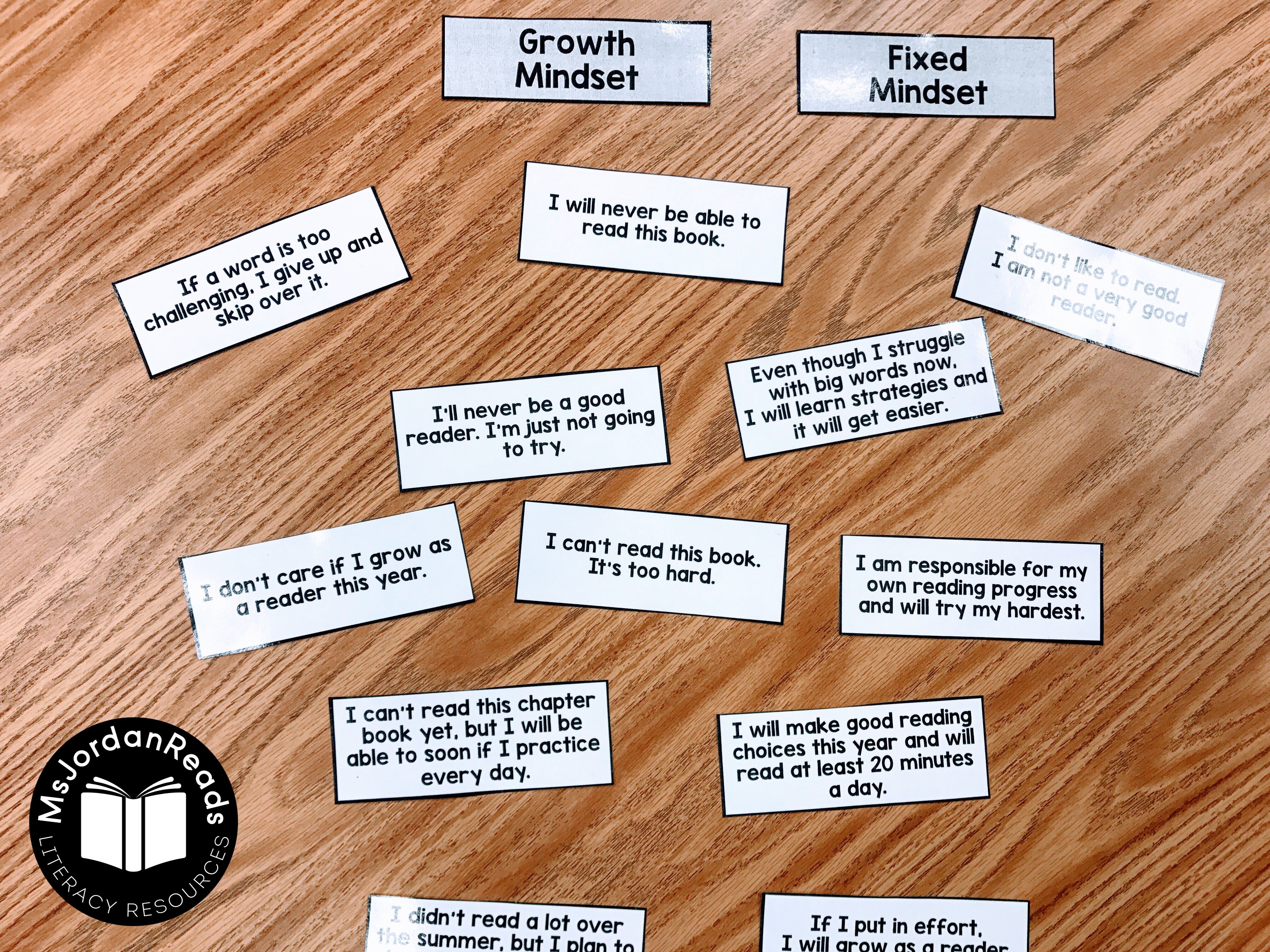
After the students finished sorting the sentences into the correct column, we glued them down and created a reference to keep in our reading folders.We then took turns “fixing up” fixed mindset statements to make them more positive. (I’ve already referred this this chart a few times since doing this introduction activity, especially when I’ve caught my students saying something negative and “fixed.” I always ask them to turn it into a “growth mindset” statement instead.)
The next day, students completed a “My Reading Growth Mindset” survey to reflect on their current challenges and set some “growing goals.” They had to complete six open-ended sentences, such as:
- I plan to work hard every day and try my best so that I can…
- When I read, I’m not very good at _______ but I plan on improving this by…
It was tough for some of my students to put their challenges, plans, and goals into words, but it was a great reflection activity and provided me with valuable information about how my students view themselves.
(NOTE: I had the students keep these surveys in the back of their reading folders so they could read it at the end of the year and reflect on whether they were able to meet the goals they set for themselves!)
We only spent two days completing these intro lessons, but I regularly talk about having a “growth mindset” with my students. There are so many classroom connections, and it’s important to promote a growth mindset through student feedback and reading strategy conversations. I even connect to our day-to-day reading. When reading fiction texts, I often ask my students if the characters have fixed or growth mindsets when solving problems. We even talk about it with non-fiction biographies!
Children’s Books for Teaching Growth Mindset
Are you looking for fun, children’s books for introducing or teaching growth mindset? Check out my growing list of books below! They are not specific to Reading, so feel free to use them with any of your classes or subjects!
*This list contains affiliate links. Read my disclosure policy here to learn more!
- What Do You Do With a Problem?
- What Do You Do With An Idea?
- The Most Magnificent Thing
- Your Fantastic Elastic Brain: Stretch It, Shape It
- The Girl Who Never Made Mistakes
- Beautiful Oops!
- The Dot
- Making a Splash
- The OK Book
- Ish
Professional Resources
- Mindset: The New Psychology of Success (book by Carol Dweck)
- “The Value of a ‘Growth Mindset’ in Education” (article in Thinkfun)
- “Carol Dwek Revisits the Growth Mindset” (article from Education Week)
Additional Resources
Looking to cultivate a Growth Mindset with your reading groups but don’t know where to start? Or are you looking for ready-to-use materials to try out today? Check out my Growth Mindset for Reading – Activities & Posters resource. It has everything you need to get started with building your students’ reading confidence and success, including the growth vs. fixed sentence sort, “My Reading Growth Mindset” survey, and “fix-up” activity I mentioned above!
Want a copy of the poem I shared with my students? This poem is FREE for my email subscribers. If you’d like to download this poem, click here to subscribe (you will get the password via email). You will also receive exclusive access to my entire growing collection of free literacy resources! (If you’re already a subscriber, you may download the resource HERE.)
How do you teach a growth mindset to your struggling readers?
—
Happy Teaching!



